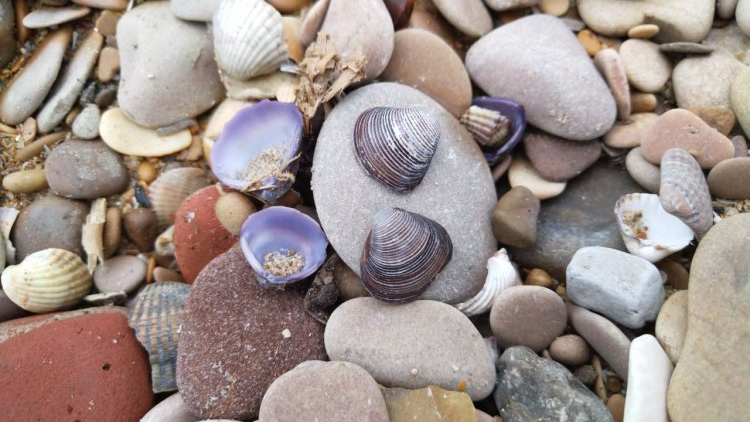
Scientists from the N.P. Laverov Federal Research Center for Integrated Study of the Arctic of the Ural Branch of the Russian Academy of Sciences (Arkhangelsk) with the participation of colleagues from the A.N. Severtsov Institute of Ecology and Evolution RAS (Moscow) selected and studied samples of invasive mollusks of the genus Corbicula, which are actively spreading in the European part of Russia. The study of nucleotide sequences of mitochondrial and nuclear genes largely explains the reasons for the rapid development of populations of the species Corbicula fluminea and Corbicula fluminalis in Russian water bodies.
Mollusks of the genus Corbicula (from the Latin corbis - basket), historically living in fresh and brackish waters of Asia, Australia, Africa and the Middle East, have significantly expanded their range in recent decades, settling in the rivers and canals of Europe, including the European part of the Russian Federation, and also South and North America.
In Russia, invasions were first recorded in the Shura-Ozen River (Caspian Sea basin, Republic of Dagestan) in 2013, and then in other reservoirs of the Caspian basin (Yuzbash-Sulak and Prisulak canals, etc.). The first habitats of corbicula in the north of the European part of the Russian Federation were artificial reservoirs with heated water created by energy facilities. In 2015, corbicule was discovered in the area where heated waters from the Kostroma State District Power Plant are discharged into the river Volga and in the technological channel of the Arkhangelsk Thermal Power Plant (Northern Dvina River basin).
Then “basket” mollusks were found in the warm canal of the Novocherkassk State District Power Plant and in the Don River. In 2022, scientists from the Southern Scientific Center of the Russian Academy of Sciences noted a high density of corbicula populations in some areas in the lower reaches of the Don (up to 50 individuals per square meter).
With a high degree of probability, corbicula could have entered the water bodies of the Russian Federation on river vessels along with ballast water, as well as through their transfer by migratory birds and together with the introduction of aquaculture objects.
As explained by the director of the Institute of Biogeography and Genetic Resources of the Laverovsky Center, Yulia Bespalaya, corbicula are heat-loving representatives of the animal world. To reproduce, they need a temperature of at least + 6 . Mollusks used the heated°C waters of power facilities as refugia (ecological shelters), gradually adapting and spreading to neighboring reservoirs. Global warming creates additional conditions for further large-scale invasions.
Corbicula, like other bivalves, are active biofilters. Once in new bodies of water, they quickly multiply, reach large numbers and begin to compete for food resources with local species of mollusks, filtering out their larvae (glochidia) from the water column and thus reducing their numbers. The high density of “baskets” also contributes to the transformation of habitats.
To fully understand the reproductive success of invasive species, scientists analyzed not only mitochondrial but also nuclear DNA. The nuclear DNA of invasive corbicula was studied for the first time in Russia.
According to Alexander Kropotin, a junior researcher at the Laverovsky Center, research results have shown that individuals of C. fluminea and C. fluminalis may be hybrids. In other words, one living organism contains different versions of nuclear DNA in its chromosomes. Some hybrid corbicula individuals are polyploid, in which case the organism has more than one pair of chromosomes.
– The rapid development of populations is due to the fact that corbicula can reproduce through androgenesis (“male parthenogenesis”). In such cases, one individual may be enough to give rise to a new population. For the first time, we examined the nuclear genes of corbicula in all discovered populations and found out that they contain both hybrid and non-hybrid individuals,” explained Yulia Bespalaya.
Also during the study, the origin of the “invaders” was established. For example, individuals of Corbicula luminalis found in water bodies of Dagestan and the Stavropol Territory turned out to be genetically closest to mollusks living in the rivers of Azerbaijan, Tajikistan, Myanmar and Turkey. It should be noted that C. fluminalis from the Euphrates River was first described by the Danish naturalist Otto Frederik Müller back in 1774, i.e. almost 250 years ago.
The study was carried out within the framework of the work under the Russian Science Foundation grant No. 21-14-00092 “Phylogeny, biogeography, integrative taxonomy and features of reproduction of bivalves of the genus Corbicula (Bivalvia: Cyrenidae).”
